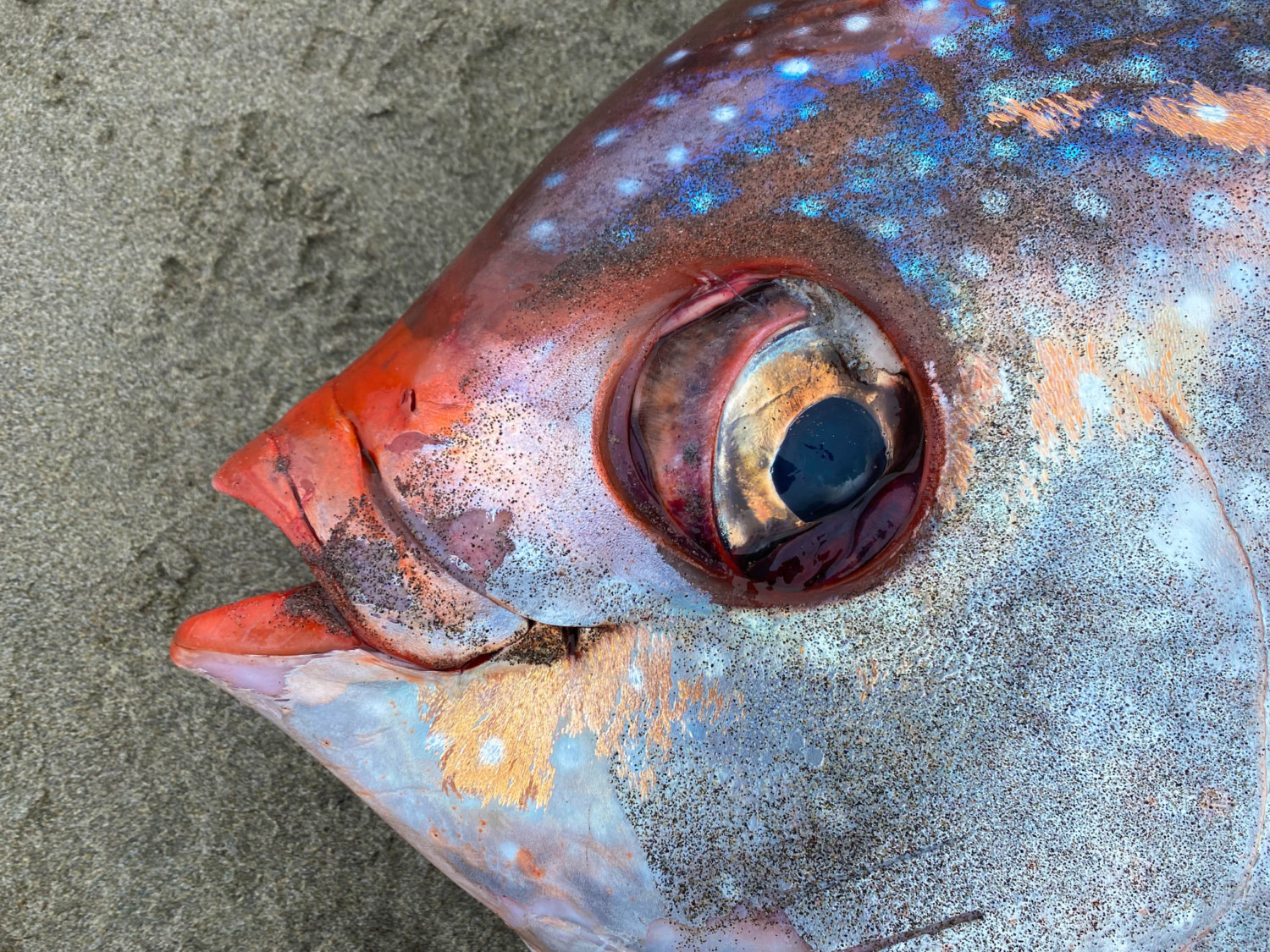A rare 100-pound tropical fish was found on the Oregon coast

On July 14, a rare 100-pound opah fish was found on the Oregon coast. The 3.5-foot fish washed up at Sunset Beach, located between the towns of Seaside and Warrenton.
“The 3.5 foot, 100 lbs Opah was reported to the Seaside Aquarium at 8:00 a.m.,” read a Facebook post by the Seaside Aquarium. “After seeing photographs of the unusual fish they quickly responded and recovered the fish. It created quite the stir at the Aquarium where folks were encouraged to come take a look at this beautiful and odd-looking fish.”
How cool! People on Facebook were impressed with the rare sighting, and the post has since racked up more than 4,000 reactions, more than 13,000 shares and almost 2000 comments.
“Beautiful fish, glad it was recovered quick enough to still learn from its passing,” wrote Facebook user Jaclyn Anderson.
“Wow, incredible colors!!” commented Christina Merten. “Interesting find for sure.”
The post went on to explain that the fish will be frozen until the Columbia River Maritime Museum identifies a school where students will get the opportunity to dissect the fish and learn more about it.
According to the National Oceanic and Atmospheric Administration, Opah fish are typically found in tropical and temperate ocean waters, so it was unusual to find one so far north. Also known as moonfish, they can grow to a size of over six feet and more than 600 pounds. Little is known about them because they are not a major commercial seafood species and live deep in the ocean.
While they are coveted as a food item for their “flavorful yet mild” taste, a San Diego Union-Tribune writer noted that opah have “erratic availability.” This is in part due to the fact that they do not swim in schools and are generally only taken in as incidental bycatch by fishermen targeting other species.
“They come up here from time to time in the summer just like Mola mola,” Tiffany Boothe of the Seaside Aquarium told Beachside Connection, referring to another type of fish sometimes found in the area. “Rarely do we see them washed ashore, though. They follow their food in the warm water current offshore. We really don’t know how many or how often. Fishermen will see them more frequently than beachgoers.”

